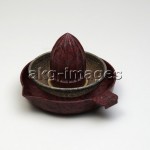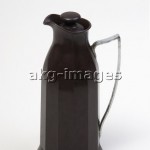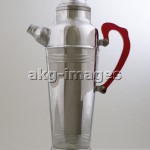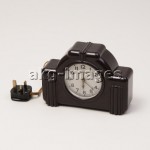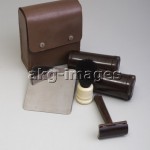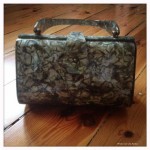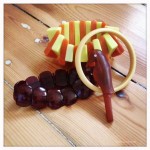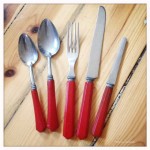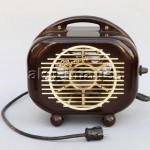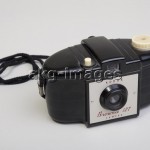Bakelite – a fantastic plastic
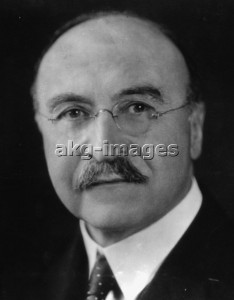
photo: akg-images
We are surrounded by all things plastic and I guess not all of us ever really think about the origins of this most versatile man-made material. This blog is a celebration of Leo Baekeland whose 150th birthday is coming up this month, the inventor of Bakelite, an early plastic and very desirable for collectors like me.
Baekeland had originally wanted to find an artificial replacement for shellac and like many fabulous inventions, Bakelite almost happened by chance. It was patented as Bakelite in 1907 and with its high resistance to electricity; heat and chemical action became much used in everyday electrical objects such as radios, sockets, light switches, thermos and many others. One of the most infamous types of radios – the so-called “Peoples’ Receiver” (Volksempfänger) was made in Bakelite and inexpensively sold so that most households owned one. Later on it was called the “Göbbelsschnauze” (Göbbel’s gob) as the Nazis used it to great effect transmitting their many speeches via radio.

photo: akg-images / Erik Bohr
It is still being used in some industrial applications today but its manufacture is complex and so it is no longer as abundant as it once was. If Bakelite has any real shortcomings it is its brittleness and pristine objects, especially those in everyday use, are highly collectable. Bakelite has a very distinct smell which distinguishes it from many of the other early plastics such as Lucite and makes it quite easily recognisable.
I love Bakelite and have been a collector for many years. I guess it started with plastic costume jewellery in my mum’s jewellery box, most of it from the 1960s. I began my own collection quite a few years ago now and I still use most of what I have collected over time, whether it is jewellery or everyday objects such as the lemon squeezer you can see in the image selection. Many of my friends don’t understand that I am not on Skype but as I use my Bakelite dial phone – one in black and one in cream – that is simply not an option! I like many of the modern trappings; I am a big fan of mobile internet services but at home I am almost entirely analogue.
Most of the Bakelite I have found in Europe is of the mottled brown, amber or green colour and it wasn’t until I met a fellow Bakelite fan in the US that I realised how many gorgeous colours it used to come in over there. American Bakelite is highly prized, especially when it comes to bangles and beads, the reds are especially rare and some beaded necklaces have reached real Bakelite fever. Bakelite has become a buzz word although there are other wonderful early plastics around, especially from the 1940s and 1950s when Lucite bags and Celluloid jewellery became real works of art.
I love the design of much of the early everyday plastic objects and there still are some companies who make beautiful objects in durable plastic today, especially for kitchen and bathroom which will probably become collectibles in the future. Watch this space.
It is a shame that – most of the time – we treat plastic items in quite as much the throw-away fashion that we do as it has a long life and doesn’t biodegrade easily. Every one of us will throw away plastic at least once a day and we seemingly can’t escape the ubiquity of it. Documentary films have shown how plastic our planet has become and I think it is about time that we think about the material that dominates our modern life in a different way.
